Family: Argidae
Family common name: argid sawflies
Subfamily: Arginae
Genus: Arge Schrank, 1802
Subgenera: none
Argidae are found in all non-polar regions of the world (Smith and Middlekauff 1987Smith and Middlekauff 1987:
Smith DR and Middlekauff WW. 1987. Suborder Symphyta. In: Stehr FW ed. Immature Insects. Kendall/Hunt Publishing Company. Vol. 1: 754 pp., Smith 1992Smith 1992:
Smith DR. 1992. A synopsis of the sawflies (Hymenoptera: Symphyta) of America south of the United States: Argidae. Memoirs of the American Entomological Society 39: 1-201.). They are external foliage feeders with a wide range of host plants. Additionally, the family exhibits some uncommon behaviors like the excretion of defensive compounds and subsocialsubsocial:
Living in aggregations but lacking organizational structure as in true social insects; can describes insects with tendencies to protect or care for thier young, feed gregariously, and build cocoon masses.
habits (Smith 1992Smith 1992:
Smith DR. 1992. A synopsis of the sawflies (Hymenoptera: Symphyta) of America south of the United States: Argidae. Memoirs of the American Entomological Society 39: 1-201.).
Arge are relatively large among the Argidae and can be up to 14 mm in length. Coloration can be highly variable, but in North America most adults are generally bright orange, black, or a combination of both (Smith 1989Smith 1989:
Smith DR. 1989. The sawfly genus Arge (Hymenoptera: Argidae) in the Western Hemisphere. Transactions of the American Entomological Society 115: 83-205.).
Arge is an extremely speciosespeciose:
describing a taxon that includes a high number of species
genus with 355 described species worldwide. Thirty-six species occur in North America (Taeger et al. 2010Taeger et al. 2010:
Taeger A, Blank SM, and Liston AD. 2010. World Catalog of Symphyta (Hymenoptera). Zootaxa 2580: 1-1064.).
A key to Western Hemisphere species of Arge is included in Smith 1989Smith 1989:
Smith DR. 1989. The sawfly genus Arge (Hymenoptera: Argidae) in the Western Hemisphere. Transactions of the American Entomological Society 115: 83-205..
 (Smith 1992Smith 1992:
(Smith 1992Smith 1992: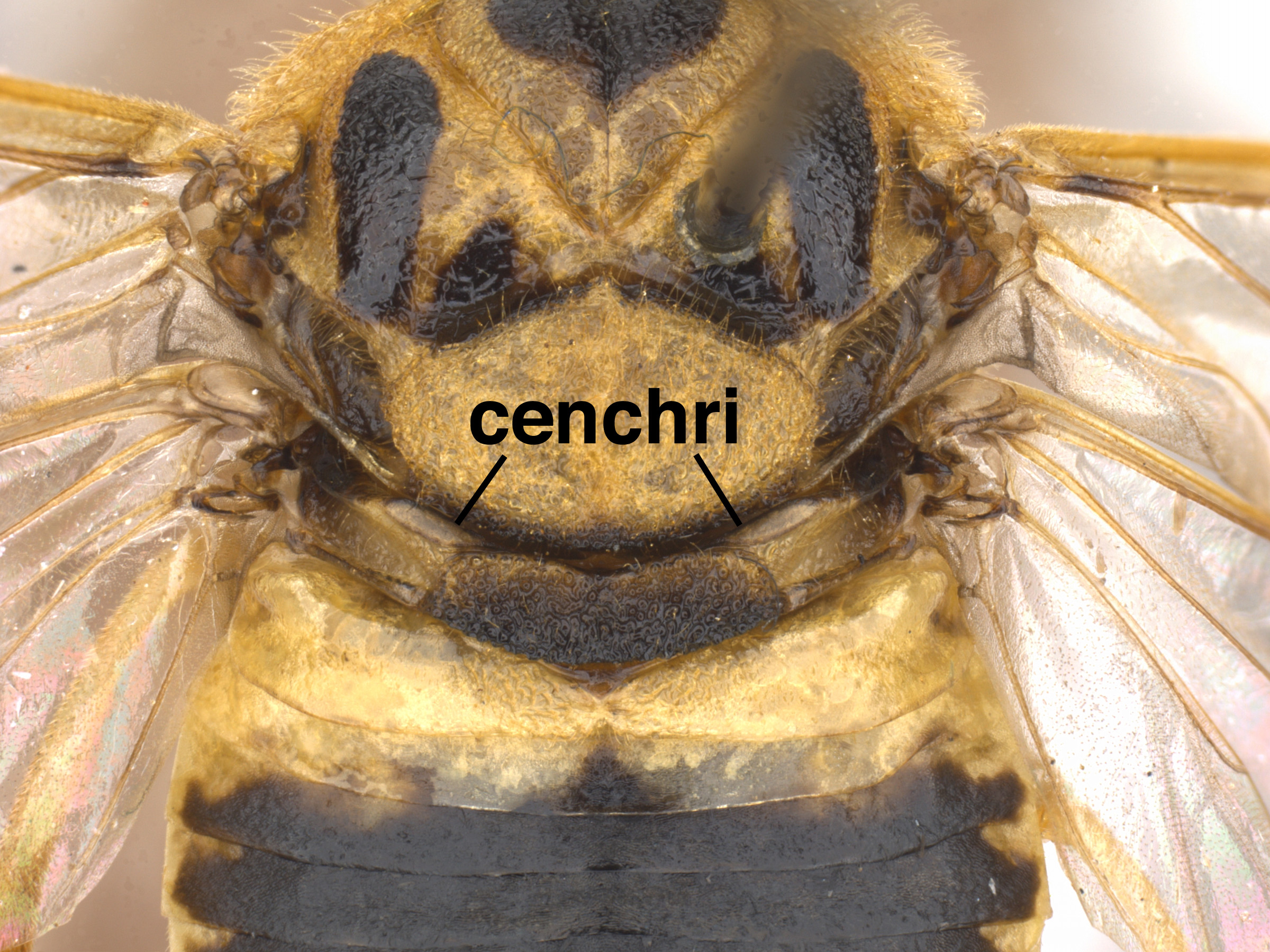 less than width of cenchruscenchrus:
less than width of cenchruscenchrus: (Smith 1992Smith 1992:
(Smith 1992Smith 1992: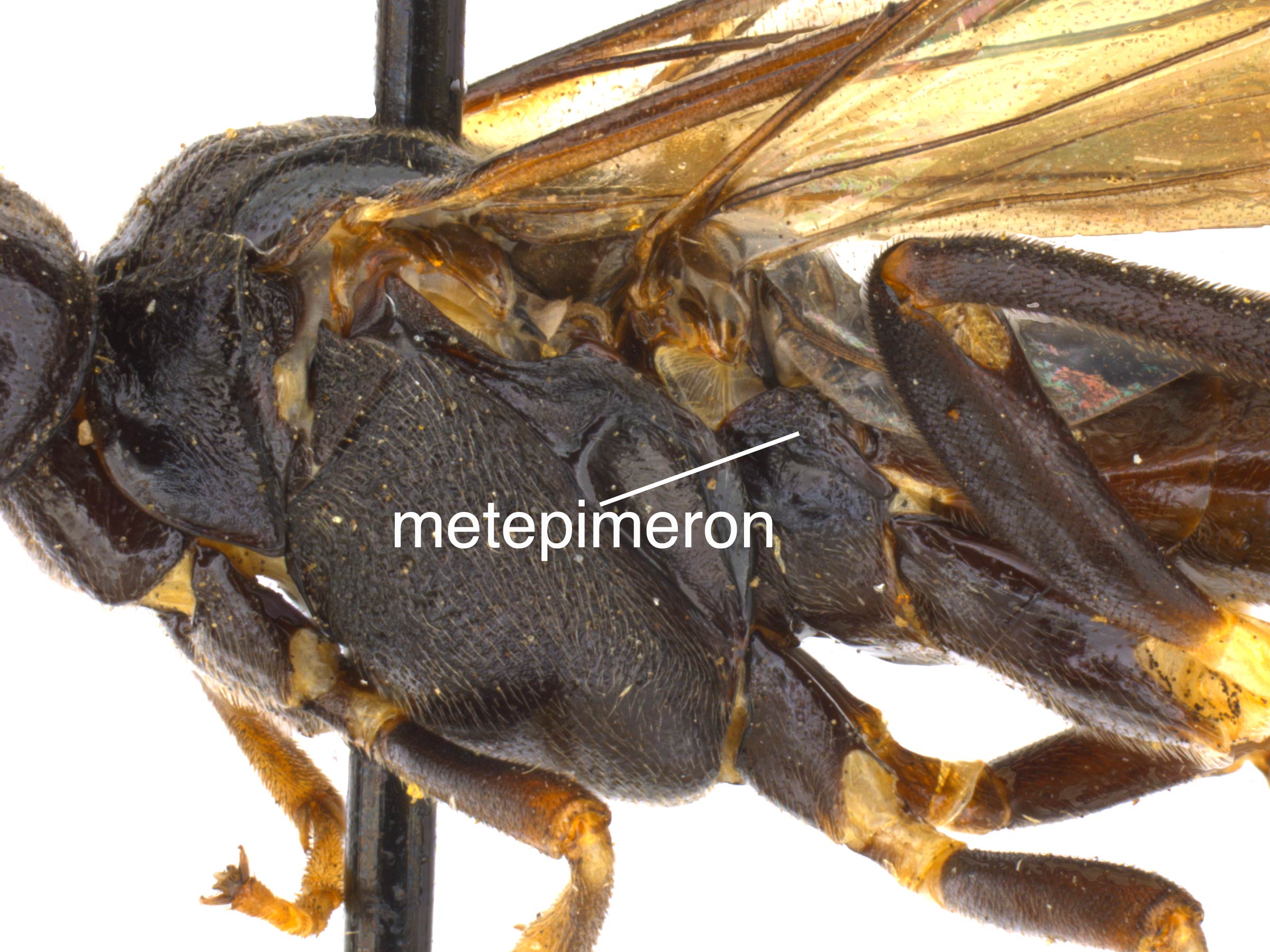 fused laterally with first tergitetergite:
fused laterally with first tergitetergite: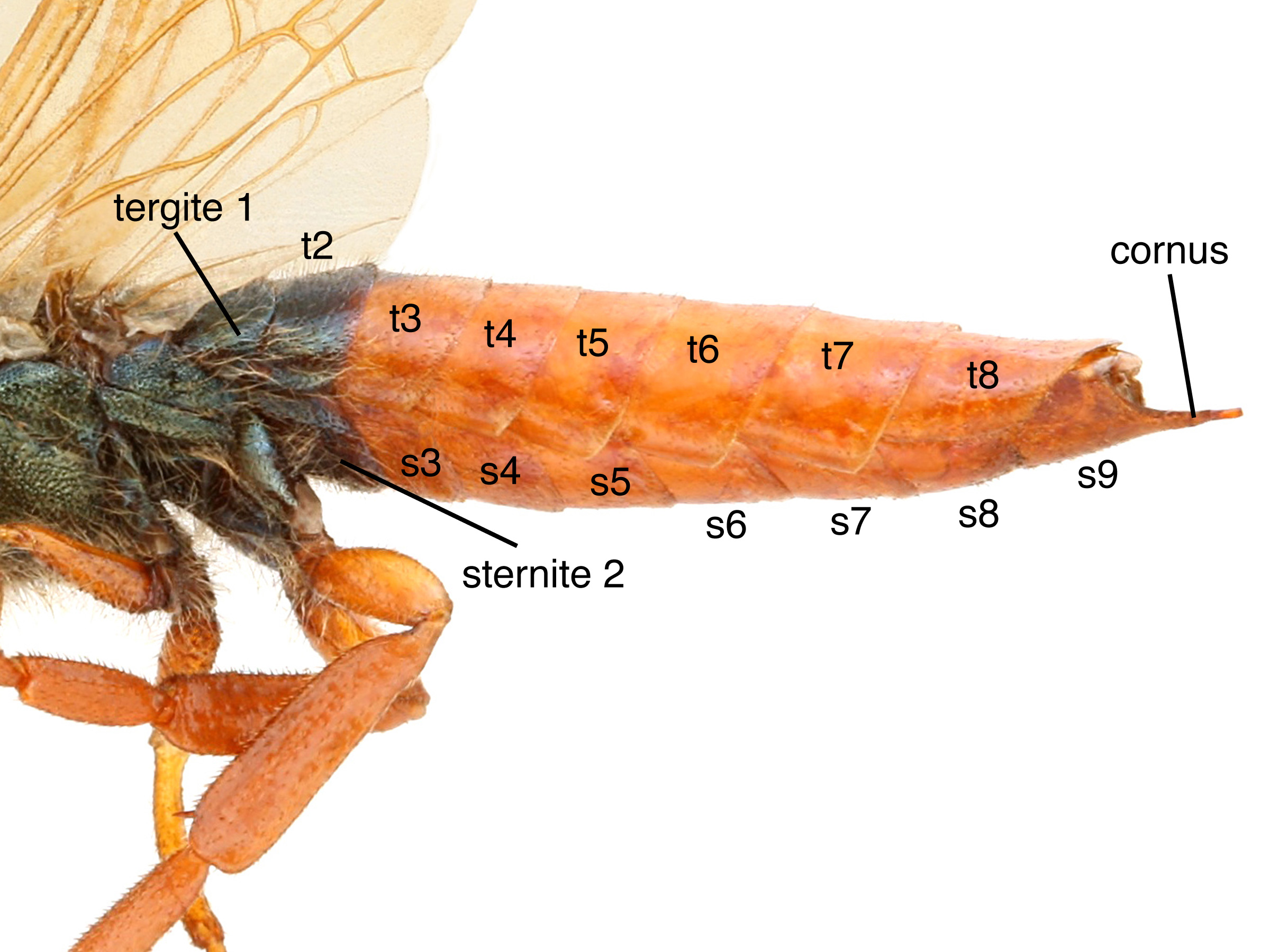 (Smith 1992Smith 1992:
(Smith 1992Smith 1992: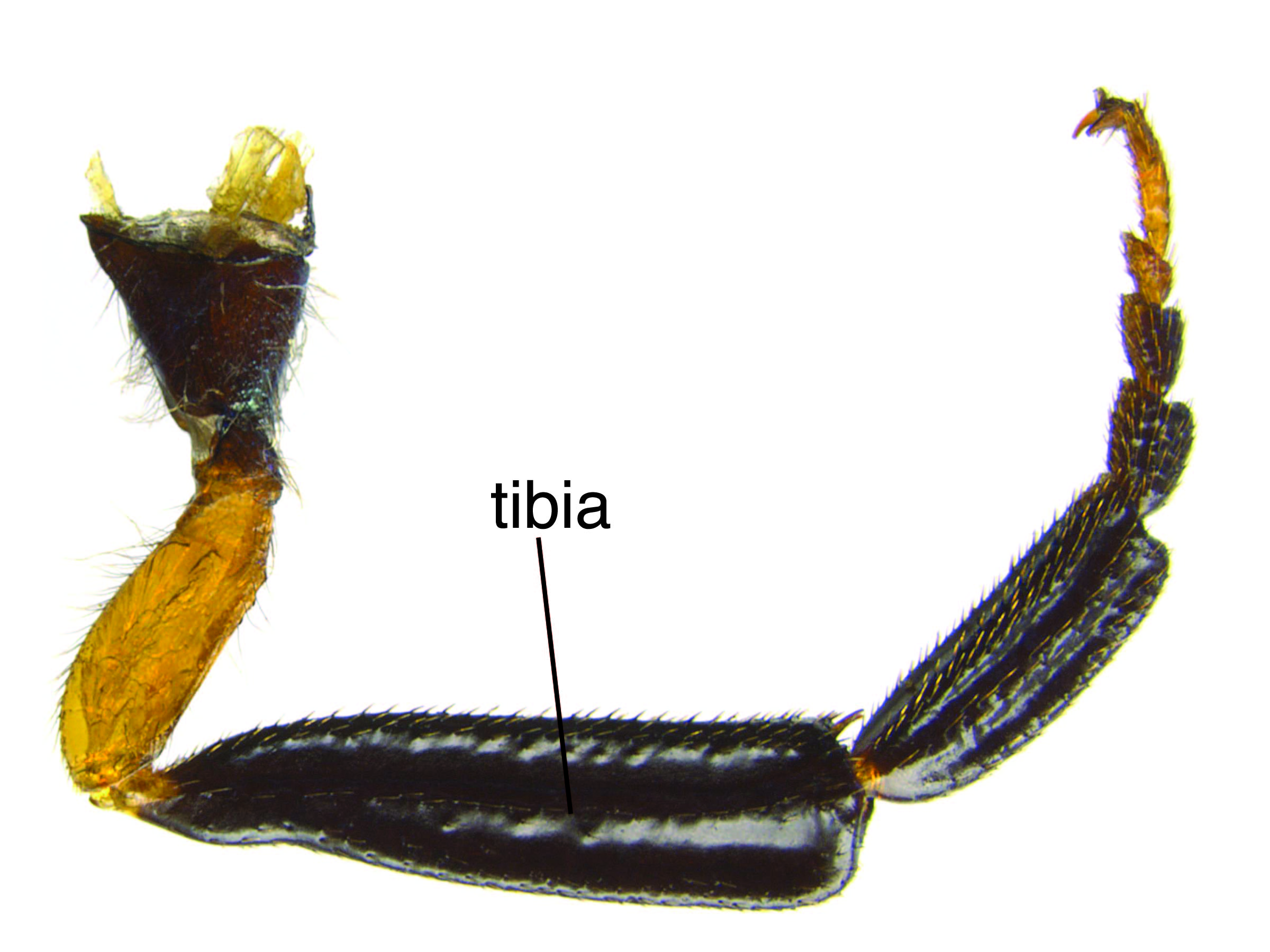 with preapicalpreapical:
with preapicalpreapical: spurs (Smith 1992Smith 1992:
spurs (Smith 1992Smith 1992: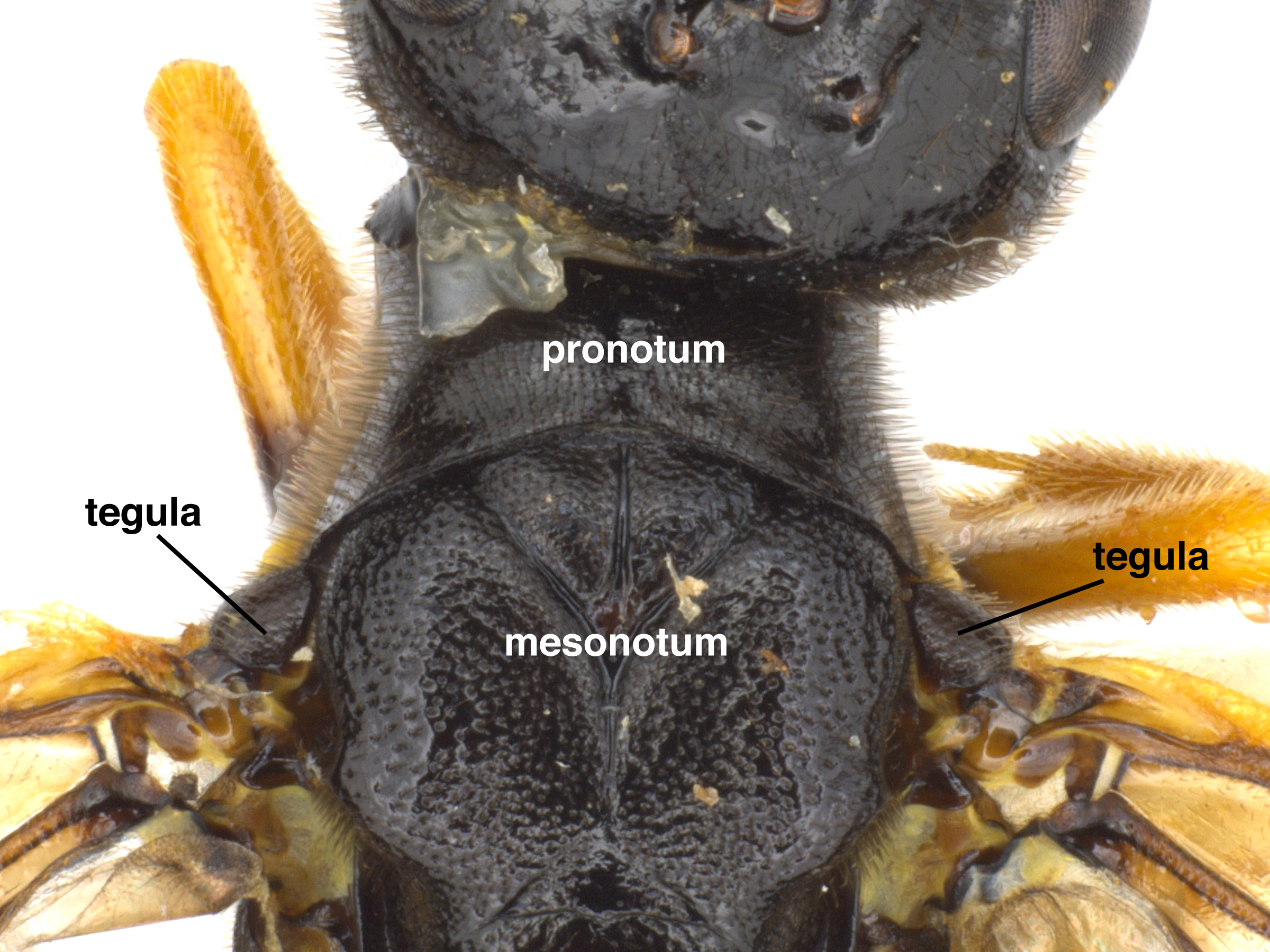 with a furrowfurrow:
with a furrowfurrow: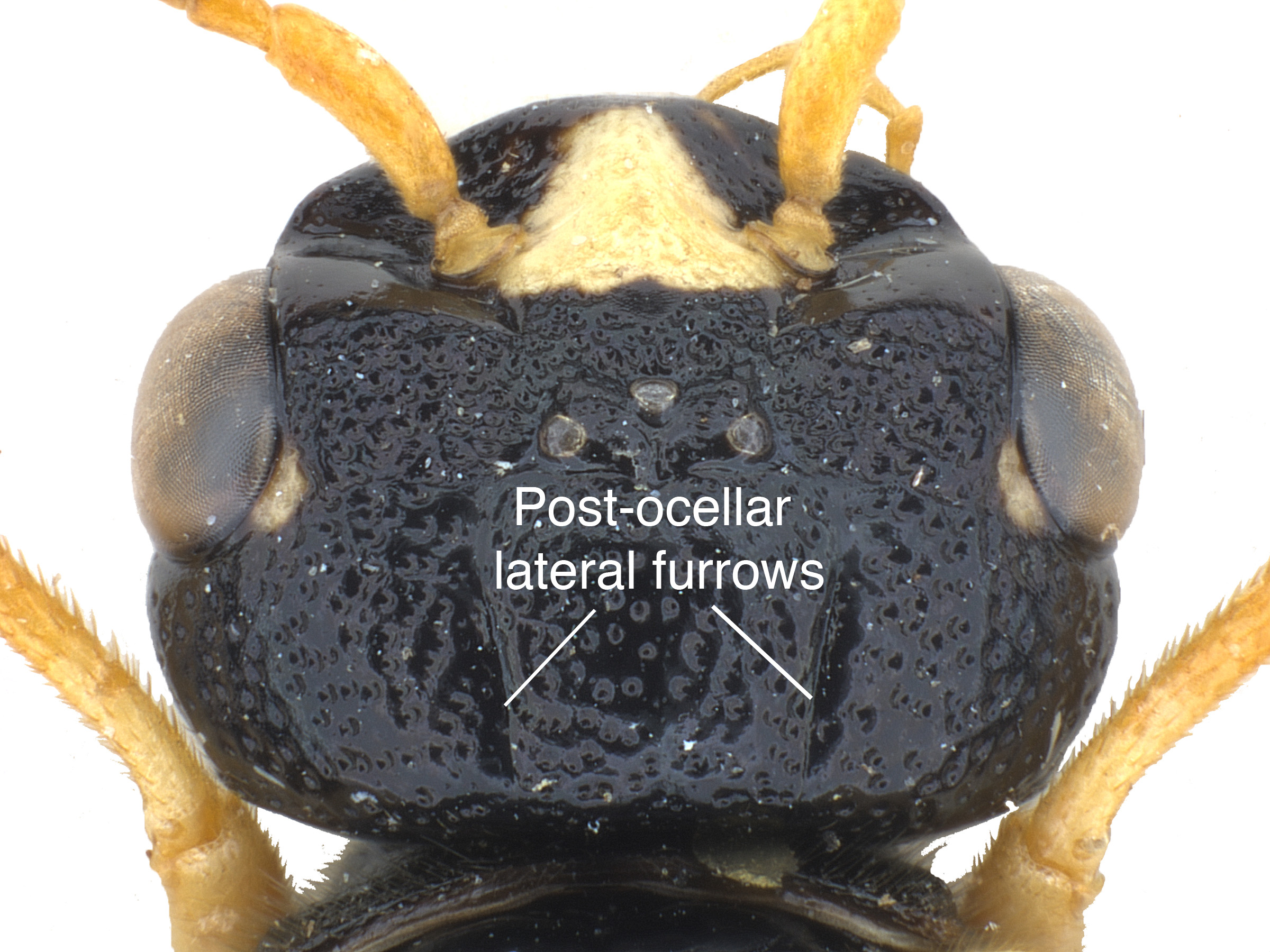 extending from anterolateral margin to tegulategula:
extending from anterolateral margin to tegulategula: (Smith 1992Smith 1992:
(Smith 1992Smith 1992: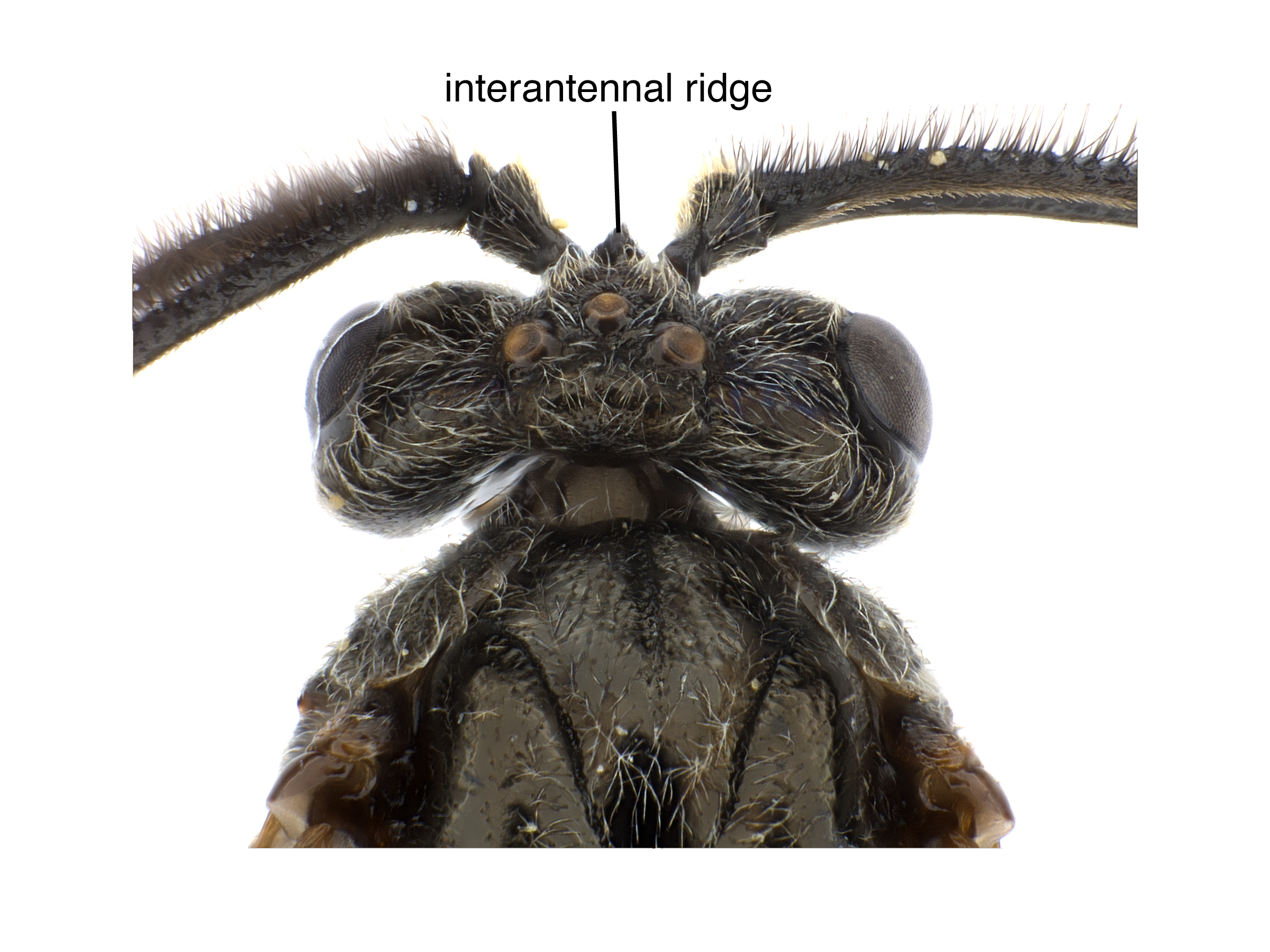 present on face (Smith 1992Smith 1992:
present on face (Smith 1992Smith 1992: R1 of hind winghind wing:
R1 of hind winghind wing: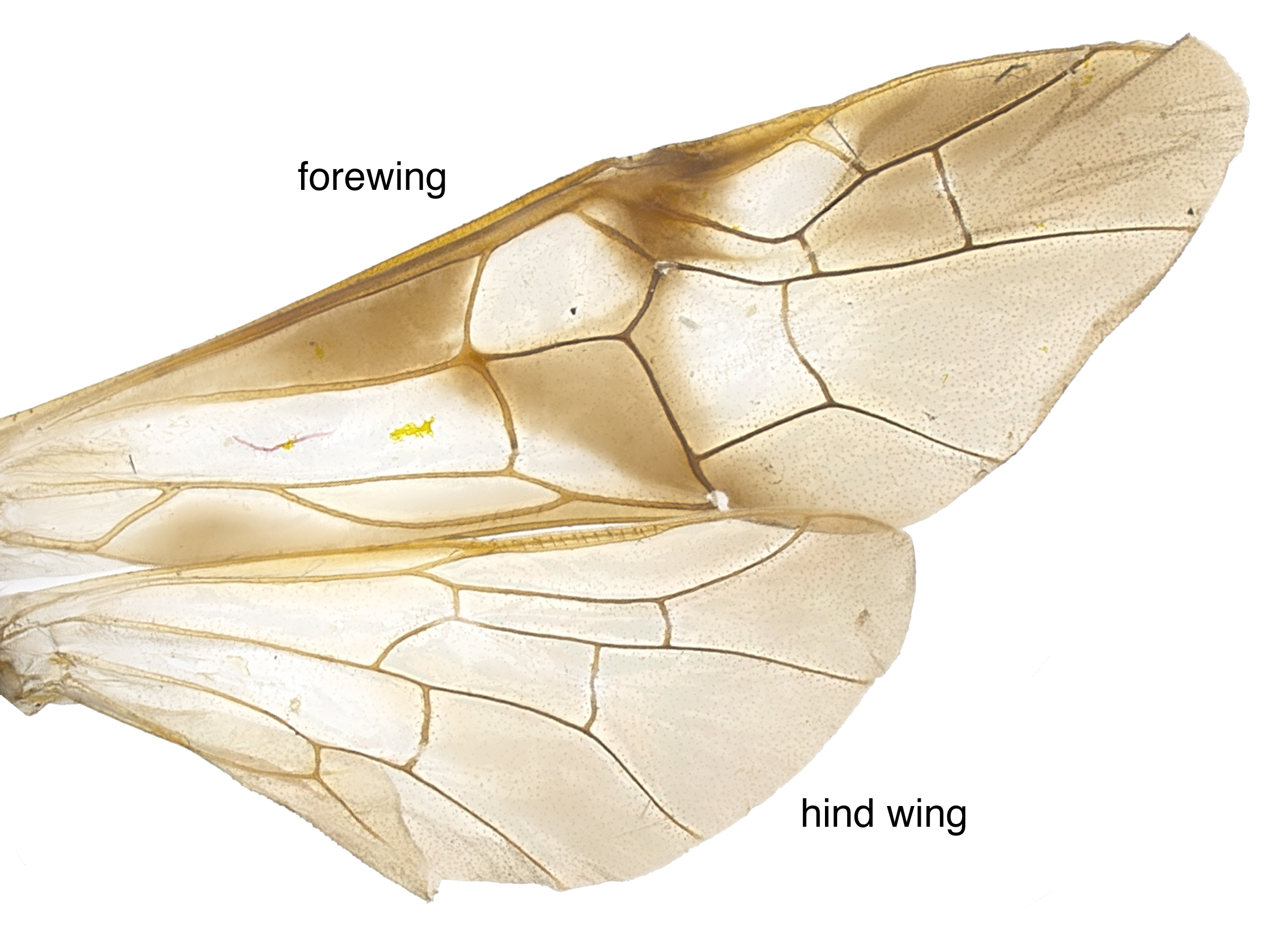 closed at apexapex:
closed at apexapex:The family Argidae can be distinguished by the simple, single-segmented flagellumflagellum:
the third section of the antennae that includes all the segments beyond the pedicel; segments of the flagellum are known as flagellomeres
 of the antennaantenna:
of the antennaantenna:
the sensory organ emerging from the front of the head, usually between the compound eyes and above the clypeus; includes the flagellum, scape and pedicel
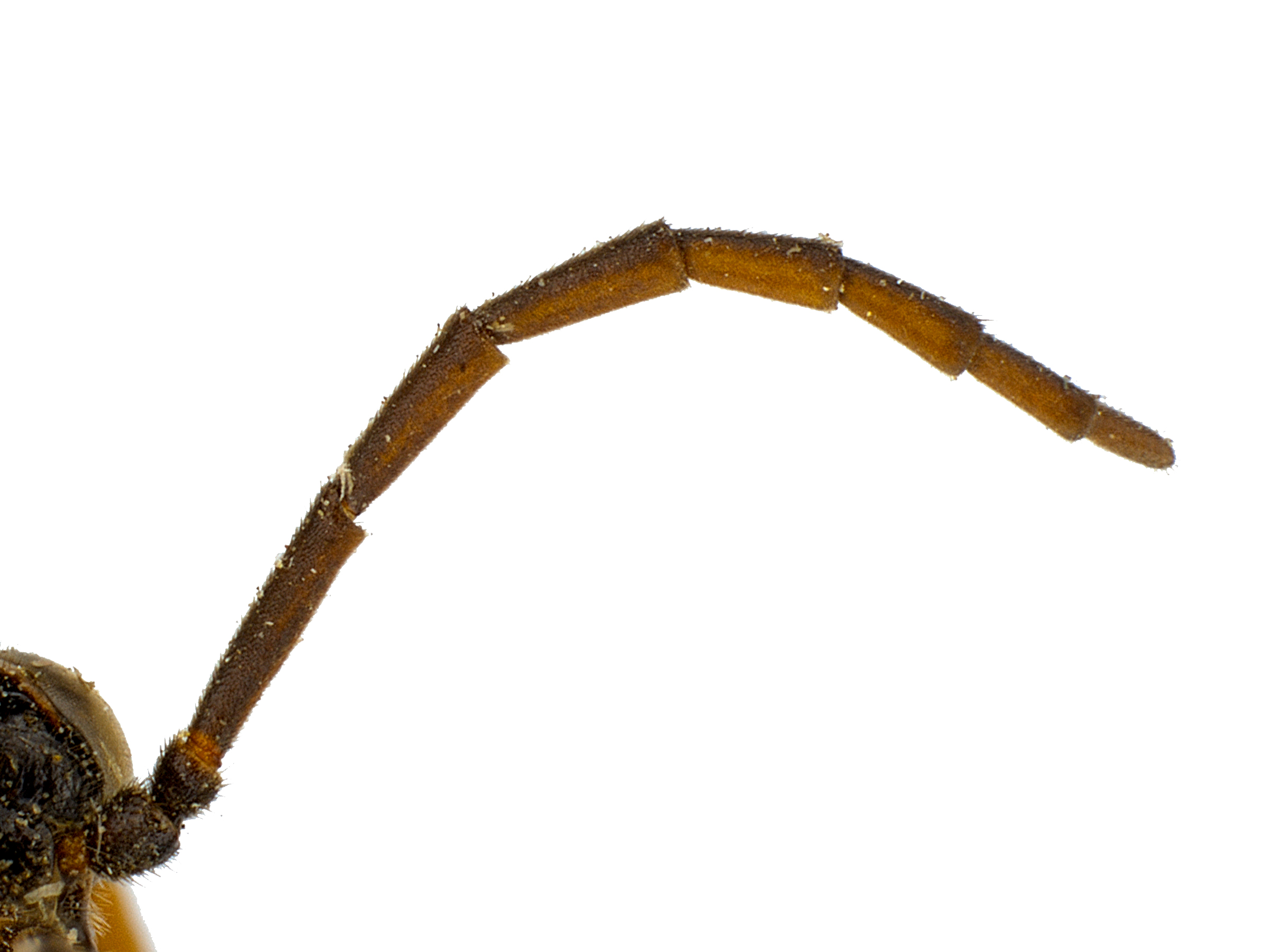 . The genus Arge can be distinguished from other genera in the family by the presence of preapicalpreapical:
. The genus Arge can be distinguished from other genera in the family by the presence of preapicalpreapical:
close to, but anterior to, the apex
 spurs on the tibiaetibia:
spurs on the tibiaetibia:
the fourth segment of the leg, between the femur and the tarsus
 and the cells of the hind winghind wing:
and the cells of the hind winghind wing:
the posterior wing of each pair of wings
 . Arge and Atomacera males lack the distinctive forked flagellumflagellum:
. Arge and Atomacera males lack the distinctive forked flagellumflagellum:
the third section of the antennae that includes all the segments beyond the pedicel; segments of the flagellum are known as flagellomeres
 that other Argidae males possess (Goulet 1992Goulet 1992:
that other Argidae males possess (Goulet 1992Goulet 1992:
Goulet H. 1992. The genera and subgenera of the sawflies of Canada and Alaska: Hymenoptera. Symphyta. The insects and arachnids of Canada. Part 20. Agriculture Canada Publication.).
Arge ochropa, commonly known as the rose sawfly, is the “most serious pest of the flowers of Rosaceae” in Europe and western Asia (Khosravi et al. 2015Khosravi et al. 2015:
Khosravi R, Sendi JJ, Zibaee A, and Shokrgozar MA. 2015. Virulence of four Beauveria bassiana (Balsamo) (Asc., Hypocreales) isolates on rose sawfly, Arge rosae under laboratory condition. Journal of King Saud University 27 (1): 49-53. https://doi.org/10.1016/j.jksus.2014.04.003). It as been intercepted at ports in New York and Chicago, and is established in Ontario (Smith 1989Smith 1989:
Smith DR. 1989. The sawfly genus Arge (Hymenoptera: Argidae) in the Western Hemisphere. Transactions of the American Entomological Society 115: 83-205.). In Iran, the species is a gregariousgregarious:
describing insects in large groups or aggregations
feeder on both the leaves and the flower buds. Adults also lay eggs into young stem tissue, potentially causing extensive damage to host plants (Khosravi et al. 2015Khosravi et al. 2015:
Khosravi R, Sendi JJ, Zibaee A, and Shokrgozar MA. 2015. Virulence of four Beauveria bassiana (Balsamo) (Asc., Hypocreales) isolates on rose sawfly, Arge rosae under laboratory condition. Journal of King Saud University 27 (1): 49-53. https://doi.org/10.1016/j.jksus.2014.04.003).
There have been recent records of A. xanthogaster as a pest on wild and cultivated roses in India. This species is highly successful due to a combination of gregariousgregarious:
describing insects in large groups or aggregations
larval feeding, female parthenogenesisparthenogenesis:
a type of sexual reproduction where embryos are produced from unfertilized eggs
, and a multivoltinemultivoltine:
describing a life cycle with many generations per calendar year
life cycle (Firake et al. 2013Firake et al. 2013:
Firake DM, Behere GT, Firkae PD, Rajkhoa DJ, Azad Thakur NS, Saini MS, Rahman Z, and Ngachan SV. 2013. Arge xanthogaster (Hymenoptera: Argidae): a new threat to rose plants in Meghalaya, India. Florida Entomologist 96 (4): 1298-1304. https://doi.org/10.1653/024.096.0408). It occurs in a temperate region of India, suggesting that, if introduced, the species could become a major pest of roses in North America (Forest Survey of India 2009Forest Survey of India 2009:
Forest Survey of India. 2009. Section 7.18 Maghalaya. Pp. 122-124. In: India state of forest report 2009. Forest Survey of India - Ministry of Environment and Forests. Dehradun, India.).
Larvae are external leaf feeders on a large variety of trees and shrubs from the genera Alnus (alder), Aronia (chokeberry), Betula (birch), Carpinus (hornbeam), Corylus (hazel), Crataegus (hawthorn), Diervilla (bush honeysuckle), Fragaria (strawberry), Hamamelis (witch-hazel), Ostrya (hop-hornbeam), Populus (cottonwood), Prunus (cherry), Pyrus (pear), Quercus (oak), Rhododendron (azalea), Rhus (sumac), Rosa (rose), Salix (willow), Sorbus (mountain-ash), Tilia (linden), and Ulmus (elm) (Smith 1989Smith 1989:
Smith DR. 1989. The sawfly genus Arge (Hymenoptera: Argidae) in the Western Hemisphere. Transactions of the American Entomological Society 115: 83-205.). There are also species that feed on Toxicodendron radicans (poison ivy), with A. humeralis even researched as a potential biological control agent for this noxious plant (Regas-Williams and Habeck 1979Regas-Williams and Habeck 1979:
Regas-Williams KA and Habech DH. 1979. Life history of a poison-ivy sawfly Arge humeralis (Beauvois) (Hymenopter: Argidae). Florida Entomologist 62 (4): 356-363. https://doi.org/10.2307/3493992).
Females oviposit along the margin of the leaf. After hatching, the larvaelarva:
the immature stage of holometabolous insects
 are external feeders on the foliage of a plant, sometimes gregariously, sometimes singly (Smith 1989Smith 1989:
are external feeders on the foliage of a plant, sometimes gregariously, sometimes singly (Smith 1989Smith 1989:
Smith DR. 1989. The sawfly genus Arge (Hymenoptera: Argidae) in the Western Hemisphere. Transactions of the American Entomological Society 115: 83-205.). LarvaeLarva:
the immature stage of holometabolous insects
 are caterpillar-like, with variable coloration patterns and frequently body ornamentation in the form of tubercles or setaeseta:
are caterpillar-like, with variable coloration patterns and frequently body ornamentation in the form of tubercles or setaeseta:
hair-like structure
(Smith and Middlekauff 1987Smith and Middlekauff 1987:
Smith DR and Middlekauff WW. 1987. Suborder Symphyta. In: Stehr FW ed. Immature Insects. Kendall/Hunt Publishing Company. Vol. 1: 754 pp.). At maturity, they can measure up to 25 mm in length (Furniss and Carolin 1977Furniss and Carolin 1977:
Furniss RL and Carolin VM. 1977. Western forest insects. United States Deptartment of Agriculture Forest Service Miscellaneous Publication 1339: 1-655.). LarvaeLarva:
the immature stage of holometabolous insects
 overwinter as prepupae in cocoons in the soil or leaf litter underneath their host plant (Smith 1989Smith 1989:
overwinter as prepupae in cocoons in the soil or leaf litter underneath their host plant (Smith 1989Smith 1989:
Smith DR. 1989. The sawfly genus Arge (Hymenoptera: Argidae) in the Western Hemisphere. Transactions of the American Entomological Society 115: 83-205.).
There are a number of defenses that feeding larvaelarva:
the immature stage of holometabolous insects
 employ to deter predators. Like many sawflies, Arge use gregariousgregarious:
employ to deter predators. Like many sawflies, Arge use gregariousgregarious:
describing insects in large groups or aggregations
feeding behavior and aposematicaposematic:
having warning coloration, indicating that an insect is unpalatable or venemous or otherwise dangerous
coloring to warn against approach. Arge also harbor volatile compounds in their hemolymphhemolymph:
the "blood" of an insect, a fluid plasma containing nucleated cells
that when secreted, can completely paralyze would-be insect predators. Because most of the host plants do not contain similar compounds, it is unclear how these chemicals are created in the body (Petre et al. 2007Petre et al. 2007:
Petre CA, Detrain C, and Boeve JL. 2007. Anti-predator defense mechanisms in sawfly larvae of Arge (Hymenoptera, Argidae). Journal of Insect Physiology 53: 668-675.).
Arge is special among sawflies in its relatively late active season; adults fly in mid-summer, and larvaelarva:
the immature stage of holometabolous insects
 can be active into the fall. Most NearcticNearctic:
can be active into the fall. Most NearcticNearctic:
describing the region of the Northern Hemisphere that includes North America south through northern Mexico
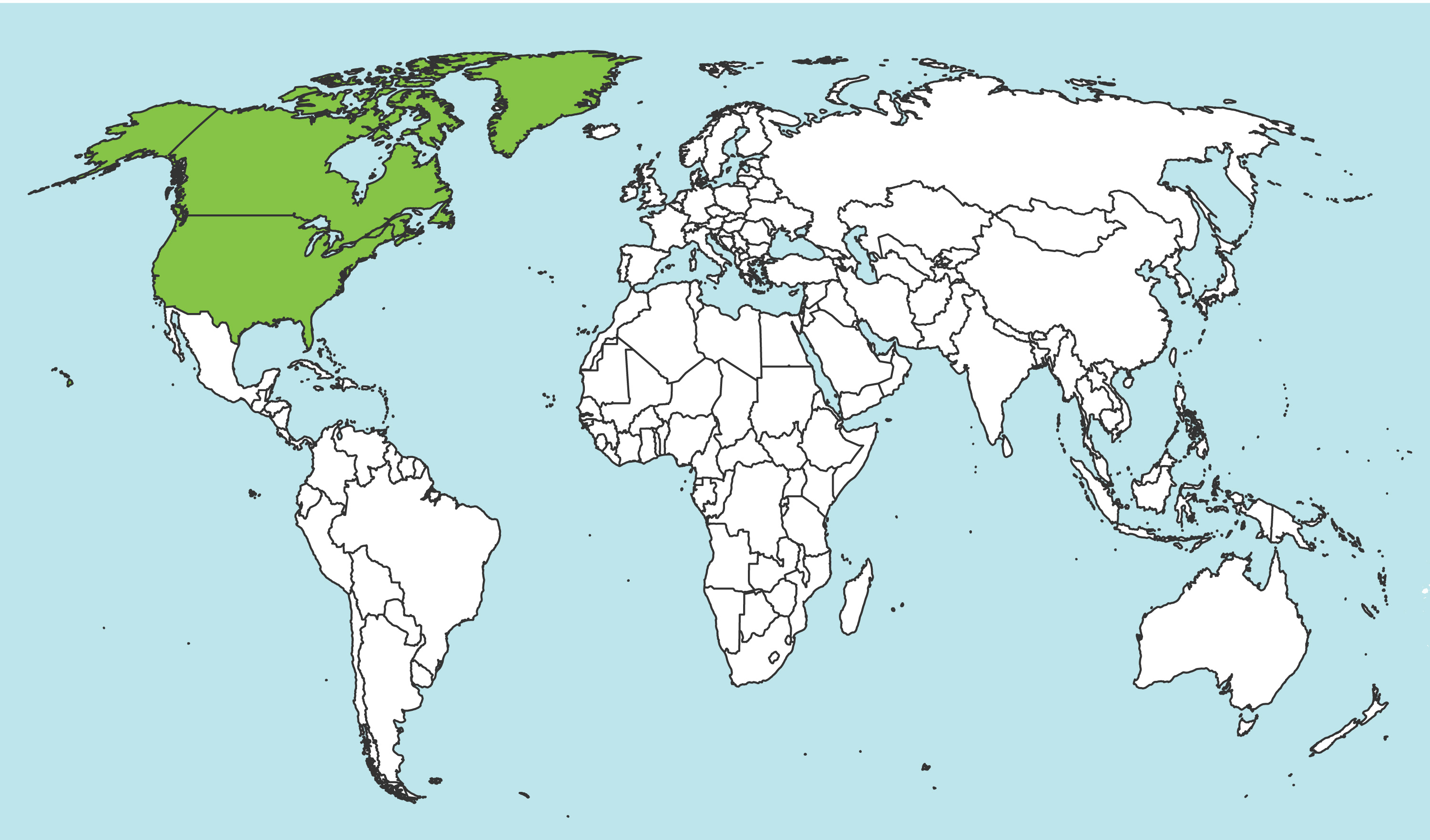 species are univoltineunivoltine:
species are univoltineunivoltine:
describing an insect with a life cycle of one generation per year
, but those in more tropical or subtropical regions can have two or several generations per year (Smith 1989Smith 1989:
Smith DR. 1989. The sawfly genus Arge (Hymenoptera: Argidae) in the Western Hemisphere. Transactions of the American Entomological Society 115: 83-205.).
Some adults have been observed with pollen on the body while visiting flowers of plants other than the larval host, so Arge may play a role in pollination (Smith 1989Smith 1989:
Smith DR. 1989. The sawfly genus Arge (Hymenoptera: Argidae) in the Western Hemisphere. Transactions of the American Entomological Society 115: 83-205.).
World: This genus is recorded in every continent, excluding Antarctica. It is especially diverse in Africa and Asia (Taeger et al. 2010Taeger et al. 2010:
Taeger A, Blank SM, and Liston AD. 2010. World Catalog of Symphyta (Hymenoptera). Zootaxa 2580: 1-1064.). Only one species, A. basimacula, has a range extending into northern South America (Smith 1989Smith 1989:
Smith DR. 1989. The sawfly genus Arge (Hymenoptera: Argidae) in the Western Hemisphere. Transactions of the American Entomological Society 115: 83-205.) and one species, A. valida, is documented in the Australasian ecoregion (Taeger et al. 2010Taeger et al. 2010:
Taeger A, Blank SM, and Liston AD. 2010. World Catalog of Symphyta (Hymenoptera). Zootaxa 2580: 1-1064.).
North America: Arge species are common throughout continental North America, from Alaska south through Canada and the United States (Smith 1989Smith 1989:
Smith DR. 1989. The sawfly genus Arge (Hymenoptera: Argidae) in the Western Hemisphere. Transactions of the American Entomological Society 115: 83-205.). The two southernmost species occur from Mexico to Panama, respectively (Smith 1989Smith 1989:
Smith DR. 1989. The sawfly genus Arge (Hymenoptera: Argidae) in the Western Hemisphere. Transactions of the American Entomological Society 115: 83-205., Taeger et al. 2010Taeger et al. 2010:
Taeger A, Blank SM, and Liston AD. 2010. World Catalog of Symphyta (Hymenoptera). Zootaxa 2580: 1-1064.). Arge ochropa is a European species established in Ontario, and has also been intercepted in Chicago and New York (Smith 1989Smith 1989:
Smith DR. 1989. The sawfly genus Arge (Hymenoptera: Argidae) in the Western Hemisphere. Transactions of the American Entomological Society 115: 83-205.).
Map data from: GBIF.org (26 June 2019) GBIF Occurrence Download Arge
Details about data used for maps can be found here.